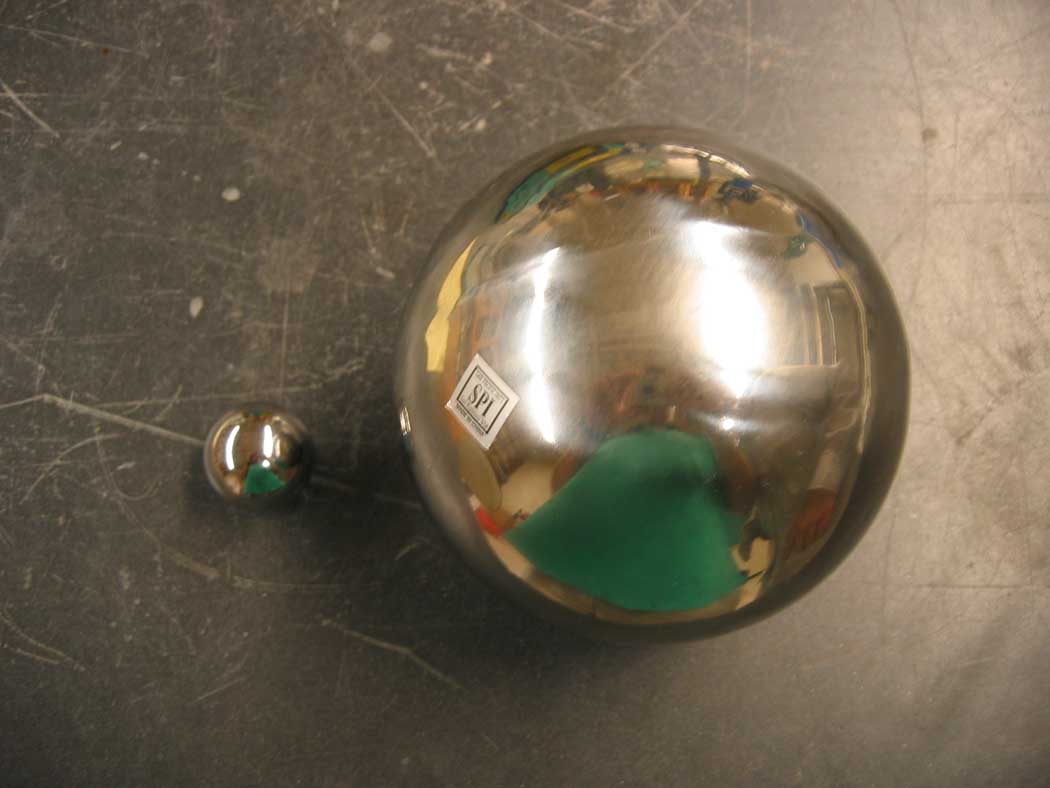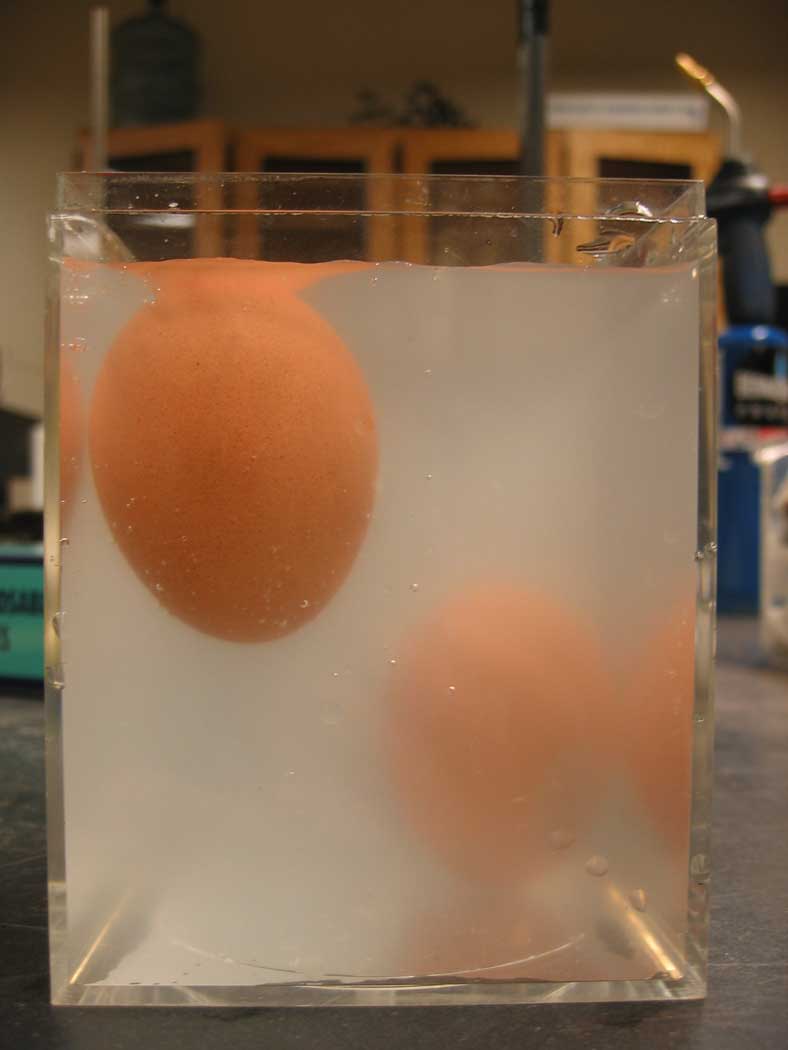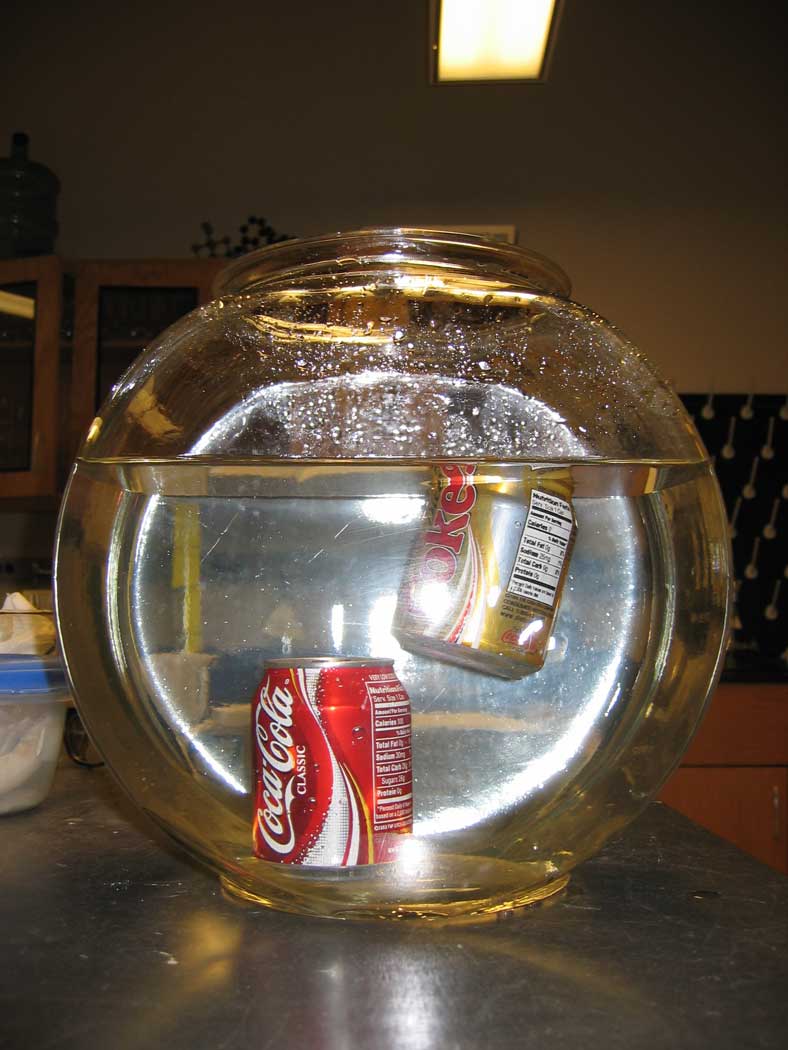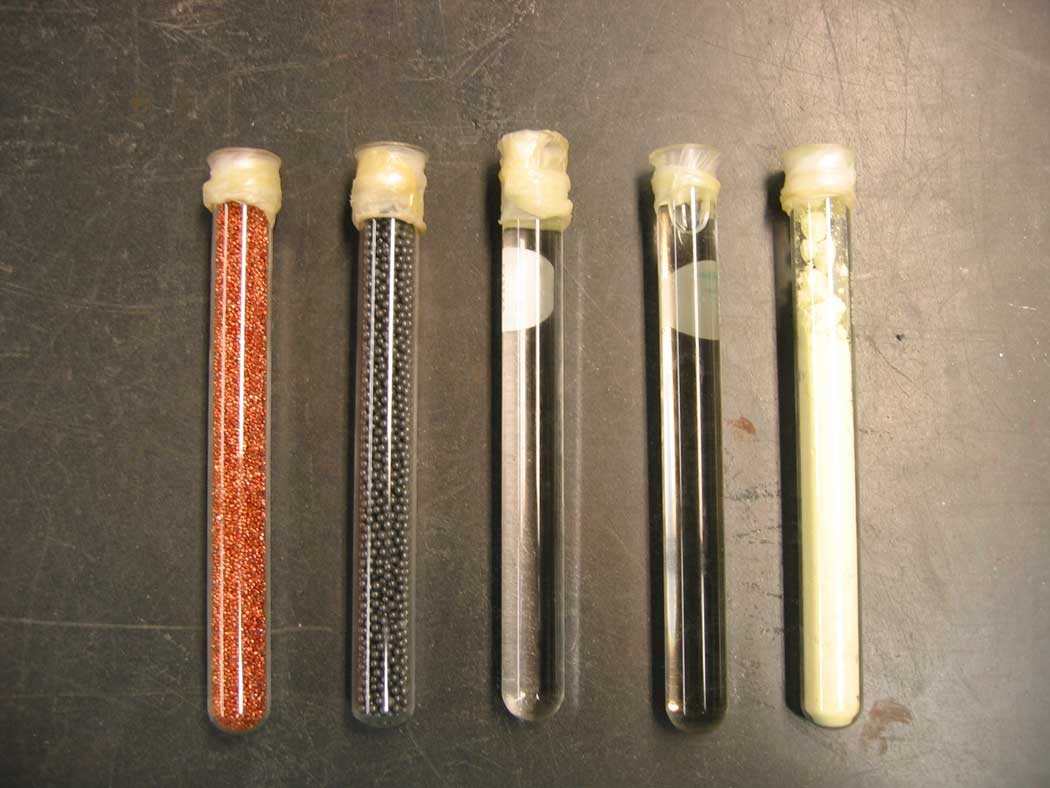 Two spheres of identical mass, but vastly different size, demonstrate the concept of buoyancy and density.
Two spheres of identical mass, but vastly different size, demonstrate the concept of buoyancy and density.
Ingredients: small and large spheres of identical mass
Procedure: A complete recipe follows.
1. Hold spheres in hand and "feel" which sphere has the greatest mass.
2. Place spheres on scale to determine mass.
3. Place spheres in water to show difference in buoyancy related to density.
Understanding: When holding the spheres in hand, most individuals will "feel" that the smaller sphere is noticeably "heavier" than the larger sphere. Not surprisingly, the larger sphere floats in water while the smaller sphere sinks. But hold on! That does not happen because the smaller sphere is heavier. Weighing the sphere on a balance demonstrates that the masses of the spheres are identical.
What creates the tactile illusion that the smaller sphere is heavier?
Ingredients: fresh egg, boiled egg, salt water
Procedure: A complete recipe follows.
1. Place a fresh egg and a boiled egg in saline solution.
2. Observe the difference in buoyancy that causes the fresh egg to sink while the boiled egg floats.
Understanding:
Density is defined as mass per unit volume.
In this experiment, the density of the fresh egg is found to be greater than the density of the boiled egg.
How can that be? Did the volume of the egg change upon boiling? Has boiling led to an overall change in the mass of the egg? Or both?
Ingredients: "plain" Coke, Diet Coke
Procedure: A complete recipe follows.
1. Place a can of Diet Coke and a can of "plain" Coke in water.
2. Note that one can floats while the other sinks. What gives?
Understanding:
Density is defined as mass per unit volume.
Clearly, the two cans have identical volumes. The differing densities must be due to differing masses of solution in the cans. But the volume of solution in each can is identical, so the solutions have different densities. The dissolved sugar in the "plain" Coke leads to a solution that is significantly more dense than that of Diet Coke. A similar observation can be made using the test tubes of water and sugar water.
Now spread the mole of atoms out into a sheet one atom thick (a
monolayer). How large an area does your Argon sheet cover?
Compare the area to that of a soccer field.
Finally, use your mole or Argon atoms to make a pearl necklace.
What is the
length of the necklace? Compare the length of the atomic necklace
to the distance from
the Earth to the Sun (93 million miles). Would the necklace reach
the Sun?
Useful information: There are 6.022 X 1023 anythings/mole.
1 mile = 1609 m.
A spherical oil droplet 0.2 cm in diameter is placed on a calm lake and
allowed to spread. When it stops changing size, the circular
oil spot has
reached a diameter of 2.0 m. Assume that the oil spot is a
monolayer -- that is, the spot is a disk only one molecule thick. What
is the diameter of an oil molecule?
Useful information:
Vdisk = π rdisk2 h where
rdisk is the radius
of the disk and h is its height, and Vdrop = 4 π
rdrop3/3 where rdrop is the radius
of the drop.
What is the ratio of the mass density of a carbon atom to
that of a carbon atom nucleus? If the Earth was compressed to
the density of a carbon atom nucleus, how large would it be?
Useful information: The mass of the Earth is 6 x 1027g.
The circumference of
the Earth is
approximately 25,000 miles and 1 mile = 1609 m.
The volume of a sphere is
V = 4 π r3/3 where r is the radius of
the sphere. The circumference of a circle of radius r
is L = 2 π r.
 Starting with two "identical" eggs, one is boiled and the other is left fresh. One is found to float and the other does not. Solving the mystery of why this happens is more complicated than one might expect.
Starting with two "identical" eggs, one is boiled and the other is left fresh. One is found to float and the other does not. Solving the mystery of why this happens is more complicated than one might expect.
 Cans of Diet Coke and "plain" Coke are found to have different densities. The Diet Coke is found to be lighter in mass as well as calories!
Cans of Diet Coke and "plain" Coke are found to have different densities. The Diet Coke is found to be lighter in mass as well as calories!
The atomic necklace
Question:
Take a mole of Argon atoms. Assume
that the Argon atoms are each 3.1 Å (1 Å = 1 X
10-10 meters) in diameter.
First, pack the mole of atoms together. How
large a volume does the mole occupy?Low energy physics
Question:
Benjamin Franklin was very close to providing crucial support
for the atomic theory
of matter 100 years before its widespread acceptance.
There is evidence that he
devised, but never carried out, the following ingenious experiment
which provides an upper bound on the size of a molecule.Mole hills
Question: A good mountain bike has a mass of
approximately 10 kg. The mass of the Earth is 6.0 x 1027 g.
How many moles of mountain bikes will have a mass equal to that of the
Earth? Around the world in 46 seconds
Question:
The carbon atom has a diameter of approximately 2 x
10-10 m = 2 Ångströms. (1 x 10-10 m =
1 Ångström,
a useful unit of length for measuring atoms
and molecules.)
The nucleus of a carbon atom has a diameter of roughly 2
x 10-15 m = 2 F. (1 x 10-15 m = 1 F where the
fermi is a useful unit of length for measuring atomic
nuclei.)
 Test tubes of identical volume but varying mass are used to explore the concept of density.
Test tubes of identical volume but varying mass are used to explore the concept of density.